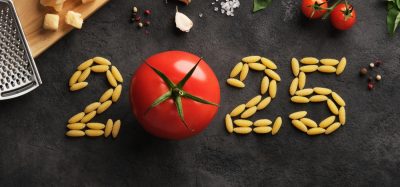Gluten detection methods
- Like
- Digg
- Del
- Tumblr
- VKontakte
- Buffer
- Love This
- Odnoklassniki
- Meneame
- Blogger
- Amazon
- Yahoo Mail
- Gmail
- AOL
- Newsvine
- HackerNews
- Evernote
- MySpace
- Mail.ru
- Viadeo
- Line
- Comments
- Yummly
- SMS
- Viber
- Telegram
- Subscribe
- Skype
- Facebook Messenger
- Kakao
- LiveJournal
- Yammer
- Edgar
- Fintel
- Mix
- Instapaper
- Copy Link
Posted: 7 September 2020 | Gideon Ashworth, Robert Truscott | 2 comments
New Food hears from two experts about the ways in which we can avoid gluten contamination within hydrolysed foods.


Allergen control in supply chains is a critical factor in protecting the health and wellbeing of vulnerable consumers. With adequate testing capabilities, we should have sufficient confidence that target allergen content is eliminated or reduced to an acceptable, safe level.
However, a brief assessment of gluten content in fermented (hydrolysed) food products has highlighted that the food industry has potential gaps in commercial testing capabilities. The testing does not necessarily accurately determine hydrolysed gluten allergen content, with some areas of current research focused in this specific area. Examples of fermented gluten containing products include (but are not limited to) certain beers, malt vinegar and soy sauce.
Here, we look at the understanding, development and implementation of controls designed to mitigate the risk of residual gluten contamination within hydrolysed foods.
Allergen control in supply chains is a critical factor in protecting the health and wellbeing of vulnerable consumers. With adequate testing capabilities, we should have sufficient confidence that target allergen content is eliminated or reduced to an acceptable, safe level.
However, a brief assessment of gluten content in fermented (hydrolysed) food products has highlighted that the food industry has potential gaps in commercial testing capabilities. The testing does not necessarily accurately determine hydrolysed gluten allergen content, with some areas of current research focused in this specific area. Examples of fermented gluten containing products include (but are not limited to) certain beers, malt vinegar and soy sauce.
Here, we look at the understanding, development and implementation of controls designed to mitigate the risk of residual gluten contamination within hydrolysed foods.


Coeliac UK recommends soy sauce as unsafe for coeliacs whilst malt vinegar, another hydrolysed product, is deemed acceptable
If we use soy sauce as an example, the recipe includes wheat as well as soya beans, alcohol, salt and water and ‘Koji’ (a fermentation culture containing the fungus Aspergillus oryzae). The soy sauce fermentation process lasts approximately six months. While gluten can be detected at the beginning of the process, with application of current testing methods there is no gluten (<5ppm) in the finished product. There are further investigations required to ascertain the hydrolysation process effect on gluten over time, however, research suggests that the gluten degradation occurs within the early stages of fermentation.1
Coeliac UK recommends soy sauce as unsafe for coeliacs, whereas another hydrolysed product is acceptable to consume; malt vinegar contains gluten at detectable levels which are within acceptable limits of <20ppm.
What is gluten?
Gluten is a protein consisting of soluble gliadins and insoluble glutenins2 found in specific grain crops, including wheat, barley and rye. Gliadin is the autoimmune trigger in wheat, other prolamins are the triggers in barley (hordein), rye (secalin) and oat (avenin).3 These can be broken down (naturally occurring in the human digestive process) into chains of amino acids linked by peptide bonds which are collectively called peptides. It is those specific peptide combinations that trigger autoimmunological responses in susceptible consumers.4
The Competitive ELISA method returns a higher result, based on the theory of the significance of protein chain length and fragmentation
Complete hydrolysation of gluten through processing is likely to break down the major constituent parts, however, minor hydrolysation may leave key reactive peptides present. Research has been conducted to understand the active peptides within the gluten protein, and advances have been made in peptide‑based immunotherapy.5
There is a consideration that residual fragments of gluten chains could potentially cause adverse reactions to some sensitive consumers but not others. Therefore, do the shorter denatured hydrolysed gluten proteins pose an equivalent hazard to a specific selection of sensitive consumers? The gluten chain may be degraded at a similar rate during the fermentation process and so the variety (or cultivar) of wheat (or other gluten containing grain), as well as other agricultural factors can influence the durability of gluten.6
Table 1 – ELISA
|
Target material |
Analyte |
Testing method |
Results |
Confirmatory analysis result |
|
Soy sauce 1 |
Gluten |
Elisa – Sandwich |
<5ppm |
<5ppm |
|
Soy sauce 2 |
Gluten |
Elisa – Competitive |
<5ppm |
<5ppm |
Table 2 – Wheat DNA
|
Target material |
Analyte |
Testing method |
Result |
|
Soy sauce |
Wheat |
PCR |
Not detected |
Detecting gluten in the lab
The two main commercially available laboratory procedures currently used to determine the presence of gluten within food products are both ELISA methods. The results are returned as parts per million (ppm), with the legislation requiring <20ppm to justify a gluten free claim on pack:
The first commercially offered method is the ‘Sandwich ELISA’ which is applicable for non-hydrolysed gluten materials. This method, when using the R5 antibody (Mendez), is the recognised and requested test method by the major retailers for food products
The second method, which is generally accepted as the applicable method to hydrolysed products, is the ‘Competitive ELISA’.7
The capabilities of the two methods is differentiated by their ability to detect variable protein chain lengths within the target material; there is potential that the Sandwich ELISA method could underestimate the level of gluten presence in the sample if the gluten has been degraded to smaller chains.


There is currently in excess of 600,000 people diagnosed with coeliac disease in the UK
However, other methods such as Multiple Reaction Monitoring Mass Spectrometry (MRM‑MS), indicate that even in hydrolysed beer products hordein peptides (from barley) – can still be present.9 Hordein is a prolamin glycoprotein which is a protein along with gliadin (from wheat) and many others which come under the common name of gluten.
For the study conducted on beer, the peptides were not identified, nor were lower than expected levels reported when measured by ELISA. However, Mass Spectroscopy (MS) identified the peptides and recorded levels at more significant values. From this it can be concluded that MS offers a higher degree of accuracy for the detection of residual gluten protein peptides than ELISA.
Key peptides within gluten can trigger the autoimmune response in coeliacs and affect other sensitive individuals. If hydrolysation breaks down the protein chains but the harmful key peptides remain, then consideration must be given to developing and using MS techniques to offer industry greater visibility into the potential hazards within foods. Especially as the available ELISA methods are unable to accurately assess the true residual content of these potentially harmful peptides within the target material.
Supplier and product assurance


Factory controls
If, like many food factories, the site is not dedicated allergen-free, or process segregation within a manufacturing site is not feasible, then rigorous controls around storage, movement of raw material, and robust allergen clean down programmes are imperative to reduce the risk of cross-contact/cross-contamination to an acceptable level. However, without suitable testing capabilities, the validation of allergen clean downs is compromised.


The purpose of cleaning validation is to demonstrate that the cleaning process has eliminated or reduced gluten presence to an acceptable level. However, without viable detection methods, demonstrable efficacy of allergen clean downs is challenging. Hydrolysed gluten products, containing deliberately spiked gluten is a potential mechanism to aid allergen clean down validations and overcome the questions surrounding available testing methods. However, this is far from a comfortable choice for a food manufacturer to be forced to take. Deliberately adding an allergen to prove that said allergen is absent seems counter‑intuitive.
Conclusion
There are currently in excess of 600,000 people diagnosed with coeliac disease in the UK, with potentially many more undiagnosed, living with non-coeliac gluten sensitivity, gluten intolerance, or potentially avoiding gluten containing products for a dietary lifestyle choice. Nevertheless, clarity over testing methods for gluten content in hydrolysed food products will offer the industry and consumers greater ability to risk assess their day to day activities. While there is research underway, until firm conclusions are drawn across the topic of hydrolysed gluten detection, there are some key elements which remain:
- If the gluten is present (opposing the results presented), the methods require review and development
- If the gluten is not present, while we would not recommend that the products may be suitable for consumers who are currently avoiding them, there is scope for further research on analytical methods for determining gluten content in hydrolysed foods
- The determination of a suitable testing method will aid strategic planning through technical supply chain and factory controls.
References
1. Detection of gluten during the fermentation process to produce soy sauce. Cao, W., Watson, D., Bakke, M., Panda, R., Bedford, B., Kande, P. S., Garber, E. A. E. (2017). Journal of Food Protection, 80(5), 799–808
2. Chemistry of gluten proteins. Herbert Wieser, Food Microbiology Volume 24, Issue 2, April 2007, Pages 115-119
3. Celiac Disease, Orphanet Journal of
Rare Diseases, Holtmeier and Caspary, March 2006
5. Using LC-MS to examine the fermented food products vinegar and soy sauce for the presence of gluten, HailiLiabKerenByrneaRenataGaliamovaOmarMendoza-PorrasaUtpalBoseaCrispin A.Howittc Michelle L.Colgravea, Food Chemistry Volume 254, 15 July 2018, Pages 302-308
6. Wheat cultivar and species influence variability of gluten ELISA analyses based on polyclonal and monoclonal antibodies R5 and G12, Marina Schopf, Katharina Anne Scherf, Journal of Cereal Science Volume 83, September 2018, Pages 32-41
7. https://www.thermofisher.com/…
8. Using LC-MS to examine the fermented food products vinegar and soy sauce for the presence of gluten, HailiLiabKerenByrneaRenataGaliamovaOmarMendoza-PorrasaUtpalBoseaCrispin A.HowittcMichelle L.Colgravea, Food Chemistry Volume 254, 15 July 2018, Pages 302-308
9. Measuring Hordein (Gluten) in Beer – A comparion of ELISA and Mass Spectrometry, Gregory J Tanner, Michelle L Colgrave, Malcolm J Blundell, Hareshwar P Goswami and Crispin A Howitt, published February 28th 2013
About the authors




Issue
Related topics
Allergens, Food Safety, Health & Nutrition, Research & development










Very interesting article on the one of the most common allergen. Great research!
Found this article is helpful for all those gluten allergic people who are fooled many times by the ‘gluten free labeling” while they are not.